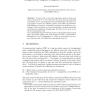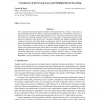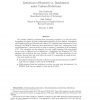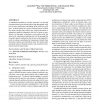11 search results - page 2 / 3 » From Non-Adaptive to Adaptive Pseudorandom Functions |
CRYPTO
2012
Springer
11 years 8 months ago
2012
Springer
We construct a functional encryption scheme secure against an a-priori bounded polynomial number of collusions for the class of all polynomial-size circuits. Our constructions req...
EUROCRYPT
2006
Springer
13 years 9 months ago
2006
Springer
To prove that a secure key-agreement protocol exists one must at least show P = NP. Moreover any proof that the sequential composition of two non-adaptively secure pseudorandom fun...
CORR
2007
Springer
13 years 5 months ago
2007
Springer
We consider the least-square regression problem with regularization by a block 1-norm, that is, a sum of Euclidean norms over spaces of dimensions larger than one. This problem, r...
APPROX
2008
Springer
13 years 7 months ago
2008
Springer
We consider (uniform) reductions from computing a function f to the task of distinguishing the output of some pseudorandom generator G from uniform. Impagliazzo and Wigderson [IW]...
SIGCOMM
2012
ACM
11 years 8 months ago
2012
ACM
A fundamental problem in wireless networks is to develop communication protocols that achieve high throughput in the face of noise, interference, and fading, all of which vary wit...




